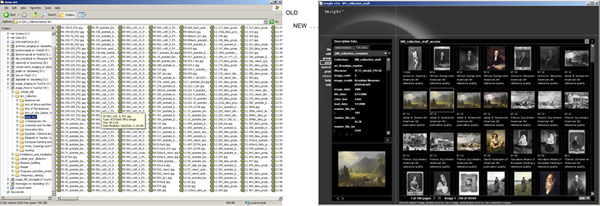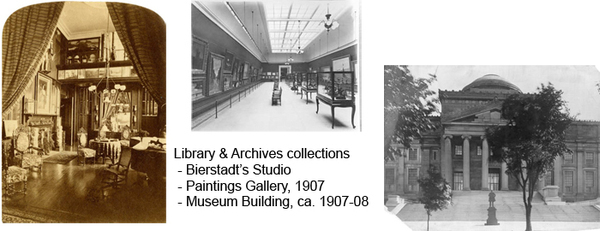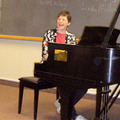Pictures! Pictures! Pictures!
Today we’re launching the next installment in the Brooklyn Museum Collection on the Web—more than 4,000 images from the Libraries and Archives will join the 5700+ works of art and the nearly 10,000 views of past exhibitions that you’ve already been enjoying. Opening up this latest part of the collection to our community is close to my heart—I used to be the archivist here at the Museum before I went over to the “dark side” and started working with virtual stuff instead of the real thing. Hooray! Looking back over the work we’ve done building a DAMS for the Museum, a couple of visuals, a question, and a caveat jump to mind:
“The pipeline opens.”

Back in 2005, when we first started talking about digital imaging, I kept envisioning a giant pipeline pouring out images onto my office floor (at 3AM, of course). OK, we’ve got that under control – everything’s now pouring into the DAMS pretty smoothly – AND images are now flowing out to the Museum’s Collection on the Web pages. More importantly, they do so without anybody throwing a switch, copying image files, or writing captions, which brings me to image #2:
“Plays well together.”

It’s not a cliché to say that everything is interconnected. Our DAMS and Collection on the Web projects couldn’t happen without both human and application interactions. The web of collaboration engages people throughout the Museum to the community beyond, from the start of workflow when an image is requested, to the tagging, mashups, commentary, and glossy publications once it’s out in the world. And it’s not just people: our Luna DAMS talks to TMS (our collections management system) and vice versa; our website applications talk to both as well as to content management data sources. Not to speak of Flickr, MySpace, and beyond.
“What’s ‘The Collection’?”

Like most museums, we have a great deal of great “stuff” that extends beyond the formal collection: collections of documentary photographs; special collections in the libraries and archives; scrapbooks, letters, receipts, photographs, and other documents that came to the Museum along with an accessioned object. Curators, librarians, and archivists can’t resist these materials, which help tell the story of the collection.
How the Museum grew over the years and how we presented and interpreted the objects is part of the story that can be told with materials from the Museum Archives: pictures of the building and its galleries; views of exhibition installations; press releases and other historical documents. We’ve already launched our exhibition images on the Web (a project I worked on with HTML babysteps years ago); today’s release of a cross-section of archives and library materials is just the start of offerings that will let you build connections across the collection.
“You’ve got to love data to do this job.”
Building a DAMS isn’t all about the pictures—if that was the case, we could just throw the images up and say “browse.” You have to be able to find the image you want and, if you’re on the working side of the equation, you’ve got to manage great masses of image files. The data-crunchers in the Digital Lab link every image to basic “metadata,” object data comes from TMS, and our dedicated Web community provide tags, item by item. It’s a lot of steps by a lot of people…more on imaging and data workflow in my next post.

Deborah Wythe manages the Brooklyn Museum’s Digital Collections and Services department (the “Digital Lab”), coordinating digital imaging activities museum-wide, including the photo studio, scan lab, digital asset management, and rights and reproductions. Before moving to the Digital Lab, Deb was the Museum Archivist, where she managed the Museum’s historical records and worked on several technology-driven projects. Deb edited the new edition of Museum Archives: An Introduction, published by the Society of American Archivists in 2004, and wrote the chapters on the museum context, appraisal, description, records surveys, and photographs. Prior to joining the Brooklyn Museum staff, she worked on the Steinway Collection at the LaGuardia and Wagner Archives and, as an intern, organized the records of the Department of Musical Instruments at the Metropolitan Museum of Art. In her previous life, before discovering archives work (she has always been a museum maven), Deb earned her Master’s and PhD in musicology at NYU. She still studies the piano.
